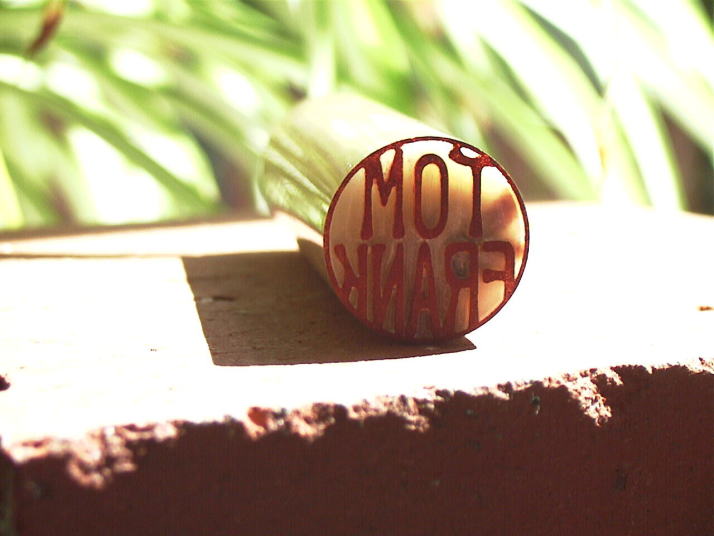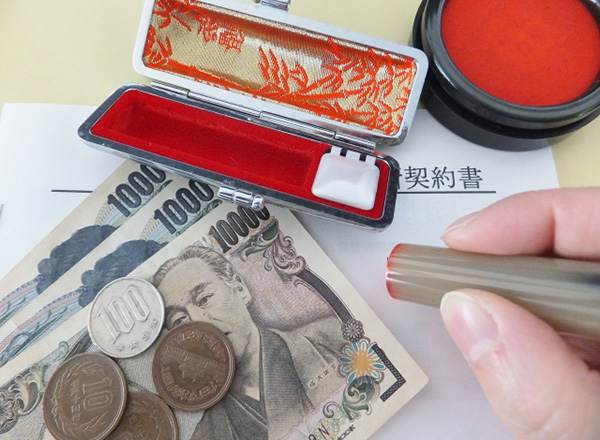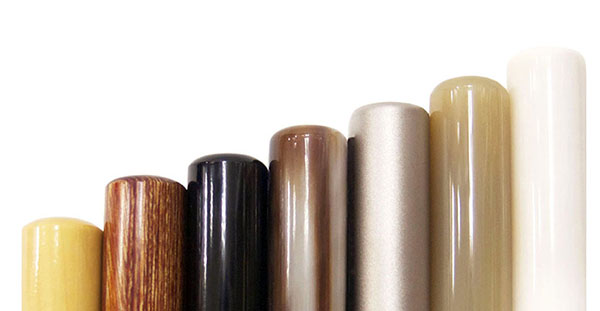
photo by inkanhanko
In the western world, the signature is the standard form of proof of identification. Important contracts require a signature, with each side receiving a copy of the document after. Even cross-national agreements are validated with a signature.
So, how about Japan? In Japan, the inkan (seal), also known as a hanko, does the same job as the signature. Inkans are a part of everyday life, used regularly in the workplace to validate documents, to receive a package in the post, and of course, in big contracts and in large purchases.
For those used to the ubiquity of the signature, this is a major difference. In some respects the inkan can be considered second only in importance to money in Japan. For foreigners residing in the country, the inkan becomes unavoidable. This article introduces what you need to know.
The importance of an inkan

So, when will you need an inkan? Basically in any situation regarding the establishment of legal rights or obligations. Some concrete examples of this include:
- Renting or buying an apartment from an estate agent
- Opening a bank account
- The buying, selling or transferring ownership of a bicycle.
- In contracts between companies or businesses.
- In a business environment as a record of transactions and in mailed correspondence
With regards to opening a bank account, banks such as City Bank or Japan Post Bank do allow you to open accounts with a signature. Also, in certain cases, large banks like Mitsui Sumitomo allow signatures. The best thing to do is find out the requirement after you have chosen a bank.
One other thing worth mentioning, apparently you can now get married with a signature!
Types of Inkan
There are 3 main types of inkan.
Registered Personal Seal
This is the most important inkan, the one officially registered at the local ward office. However smart an inkan, unless it has been properly registered, it cannot be used officially. If you have one of these registered seals, you can cope with any situation when you need an inkan.
Beware though, if you do not have proof of residence status you cannot register your seal.
Bank account seals
This is an inkan that has been registered at a bank, used specifically for opening a bank accounts and depositing or withdrawing money. Many people choose to use their Personal Registered Seal for these transactions; this is a risk though as it is a lot of hassle if the registered seal gets lost.
Unofficial Seals
Unregistered inkans are called mitome-in. This is the kind you can easily buy in 100 yen shops. They can be used to confirm you have seen a document. Mitome-in are common in everyday life. Seals that require no ink are called shachihata. Convenient to carry, they are often used as unofficial seals. However, please be aware that insurance contracts or forms submitted to banks may not accept ‘shachihata’ seals. On these occasions you will need a seal that uses an ink pad.
Material for inkan

photo by tokumido.com
Various materials are used to make inkans. The highest quality of these would be ivory. Of course, the price of these is correspondingly high, costing tens of thousands of yen. If you got one, you would want to use it for the rest of your life.
Ivory, the beautiful grain of boxwood and the jet-black shine of black buffalo horn are all popular as Personal Registered Seals and these style inkans are reputed to bring good luck. Recently durable titanium inkans have also become extremely popular.
The size and material of inkans depend on gender. Men prefer wide and weighty seals made of ivory or water buffalo horn, women prefer slimmer and more attractive designs using amber or crystal material. For people short of money, plastic inkans can be produced cheaply, but be aware that some districts may not accept them as a registered inkan.
Inkans for foreigners

photo by shoheido.com
Inkans for foreign names can be produced in the same way as for Japan. For unregistered inkans, the alphabet, katakana, or even some fancy kanji can be used as the seal. Choose whatever you like. However, if you want to use it as a registered inkan, the rules are different.
As explained in the Registered Personal Seal section, you need the right residence qualification. Inkans cannot be registered on a short stay visit.
The next important thing is the name displayed on the residence card, permanent residence certificate or former alien registration card. Essentially inkans can only be registered with the full name, first name or last name recorded in the residence register.
In some cases, as Japanese cannot easily read names written in the alphabet, an inkan inscribed in katakana would be easier to read, but please remember that unless you write down the katakana when you first register, you will only be able to get the alphabet inkan.
Inkans for foreigners now use the horizontal script as standard, with many putting first name at the top and surname at the bottom.
Making an inkan
Inkans for foreigners are normally order-made. Consult the staff at an inkan shop – there are many around town, and they should be able to show you print samples as well as their stock of inkan types to help you select the right one.
If you don’t have much time, or just want one quickly made, you can order an inkan online. For reference we have listed a few stores who make inkans for foreigners. Just a look at the list of items should give you a good idea of what inkans are available.
はん太郎ドットコム:外国人の印鑑
Hankoman:外国人向けハンコ
はんこ激安堂:外国人の方の実印
ボンドカシエ
Summary
In the past countries such as China and Korea also used inkans as Japan does now, but that custom seems to be dying out. The inkan culture now only really survives in Japan. The expertise of these inkan craftsman is a precious resource.
At places often visited by foreigners, reasonably priced shops allow you to make an order then go off sightseeing while your name is inscribed in Japanese script. Owning your own personal seal might turn out to be very useful one day!
Related Article:
Guidance for foreigner to open a bank account in Japan
Read this before your trip to Japan! How to use foreign credit cards at Japanese ATMs
No bank account required! Sending money to bank account
How to transfer funds to Japan other than bank transfer
Japan Post Bank’s online banking: How to make a payment in Yucho Direct
Still paying bank fees? Learn about innovative money transfer service TransferWise
No Japanese required! 2 Japanese banks providing online banking service in English
Had enough of transaction fees? Send money from your credit card through PayPal
Bank transfer bounced back? How to send money into Japan Bank Post account
Frequent payment from ATM? Add payee or get payee card
Every transaction, fees apply: Bank charges in Japan
Want to save bank fees? Use Japan Post Bank
Japan is still a cash society! Money exchanger in Tokyo
Prepare cash before visiting tourist hot spots! Money exchanger in Osaka

One thought on “The Indispensable Inkan: A guide to the Japanese seal”